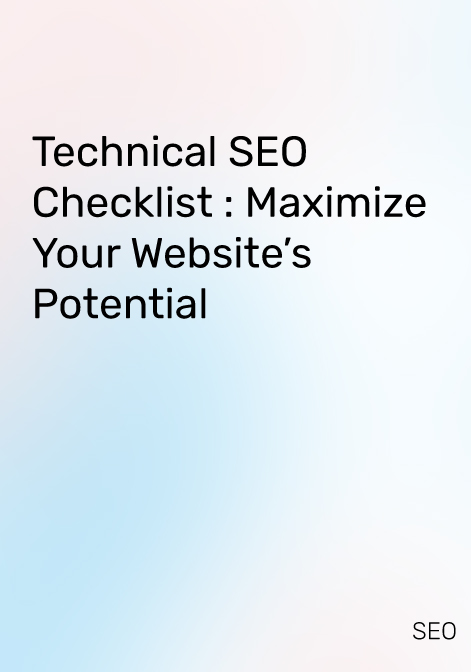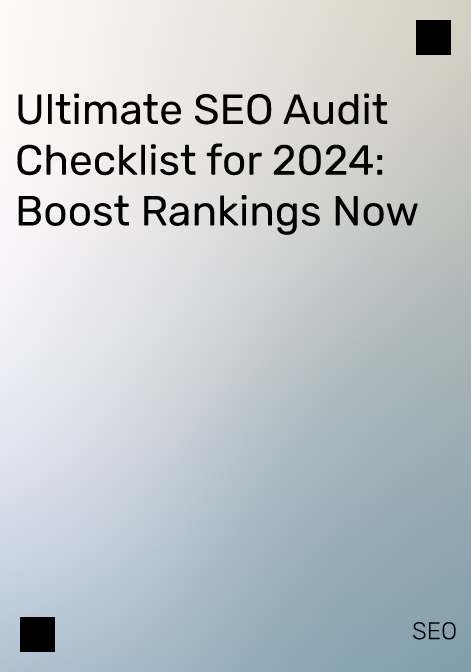We’ll break down what top sites are doing to ensure they’re not just found, but also provide a smooth experience for users and search engine crawlers alike.
Core Technical SEO Checklist
This section will cover detailed technical SEO practices for different aspects of your website.
Crawlability and Indexing
Mobile-Friendly Design
Mobile-first indexing is now prioritizing the mobile version of the website content by Google. Ensure your site design looks good and functions properly on mobile devices.
Robots.txt and Sitemap
Check that your robots.txt file isn’t inadvertently blocking important content from being indexed. Also, submit a comprehensive sitemap to Google Search Console to help crawlers discover and index your pages more efficiently.
Crawl Errors
Regularly monitor Search Console for crawl errors. Fixing these issues is essential for your website’s visibility. Common issues include pages returning 404 errors, redirect loops, or server connectivity problems.
Website Speed and Performance
A quick website is vital for user experience and SEO. Pages that load slowly can result in increased bounce rates and have a detrimental impact on rankings.
Page Loading Speed
Use tools like Google PageSpeed Insights to measure your site’s loading performance. Address any critical issues that the tool identifies, like reducing server response time and eliminating render-blocking resources.
Image Optimization
Compress and resize images to ensure they don’t unnecessarily slow down your site. Tools that strike a balance between file size and image quality can improve load times significantly.
Caching
Implement browser caching to store website resources on a visitor’s computer. This enables the browser to load the page quickly upon revisits, eliminating the need for extra HTTP requests.
On-page Optimization
On-page SEO optimizations are those you have direct control over on your website’s pages.
Titles and Meta Descriptions
Create captivating titles and meta descriptions by incorporating pertinent keywords to entice clicks and furnish search engines with insights into your content.
Heading Tags
Use H1 tags for page titles and other heading tags (from H2 to H6) to structure your content and indicate its hierarchy to search engines and readers.
Structured Data
Implementing structured data can give search engines richer information to display in search results, potentially increasing click-through rates. Use the Schema.org vocabulary to mark up your content.
Internal Links
Make sure internal links utilize descriptive anchor text to aid users and search engines in comprehending your website’s content structure and hierarchy efficiently.
Additional Reads: Mobile-First Indexing
Security and HTTPS
A secure website is a trust signal to users and a ranking factor for search engines.
SSL Certificate
Acquire an SSL certificate to enable HTTPS on your site. It encrypts the data transferred between the site and users, protecting against potential security threats.
Malware and Vulnerabilities
Regularly scan your site for malware and fix any security vulnerabilities. Malicious content can lead to a manual action or penalty from search engines, severely impacting rankings.
Advanced Technical SEO Considerations
For those who have mastered the basics, these are the advanced tactics that can take your SEO game to the next level.
International SEO
When designing websites for a worldwide audience, ensure they are tailored to various countries and languages.
Hreflang Tags
Utilize hreflang tags to indicate to search engines the appropriate language or region for serving specific pages. This practice is vital for websites operating in multiple
languages or countries.
Location-Specific Keywords
Research and target keywords that your international audience uses most. Understand the nuances that come with cultural and linguistic differences.
Core Web Vitals Optimization
Core Web Vitals encompass tangible, user-centric metrics that gauge crucial facets of the user experience. Google is set to adopt them as ranking considerations by 2024.
Largest Contentful Paint (LCP)
Optimize for LCP – the time it takes for the most significant piece of content to be fully visible in the viewport.
First Input Delay (FID)
Minimize FID, which measures interactivity by quantifying the delay between a user action and a response from the browser.
Cumulative Layout Shift (CLS)
Promote stability by reducing Cumulative Layout Shift (CLS), which measures the combined impact of all individual layout shifts caused by unexpected changes.
Schema Markup Implementation
Structured data can make your site stand out in search results.
Relevant Schema
Implement schema markup across various content types like articles, local businesses, recipes, events, and more. This enhances context for search engines and users alike.
Additional Reads: Backlinks 101 Guide
Technical SEO Mistakes to Avoid
Stay away from common pitfalls that can sabotage your SEO efforts:
Ignoring Google Updates
The search giant regularly updates its algorithms. Overlooking these updates could result in missed opportunities and potential penalties.
Not Prioritizing Mobile
With mobile-first indexing, a poor mobile experience can severely hamper your rankings.
Overlooking Broken Links
Defective links can frustrate users and impede search engines from effectively indexing your website.
Neglecting Site Architecture
A clean and logical site structure helps both users and search engines find content more easily.
Keyword Stuffing
- Using too many keywords can make things challenging for users and go against what search engines recommend.
- The bottom line is that a solid technical SEO plan can boost how well your site shows up and does in 2024.
- Keep learning, check things out regularly, and make sure every part of your site gets some technical SEO love.
- It’s essential to remember that the focus should not solely be on search engines; instead, it should revolve around providing users with an exceptional experience.
Conclusion
Implementing technical SEO for your website is a complex but essential endeavour. The checklist provided here should serve as a starting point to ensure your site is in good shape for 2024. Consistent audits, staying updated on algorithm changes, and ongoing optimization are crucial for upholding a robust SEO strategy.
It’s essential to keep in mind that technical SEO is just one part of an overarching SEO strategy. It should be coupled with quality content, robust backlink profiles, and a good user experience to create a comprehensive approach to SEO.




